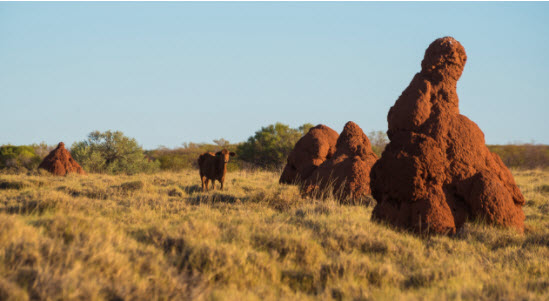Rangelands NRM managing threats to biodiversity

Theme: Environmental stewardship
Priority: Balance of tree and grass cover
Organisations: Rangelands NRM WA
Location: Fortescue River, Western Australia
The six-year project will protect and improve existing native vegetation and manage threats to biosecurity through landscape-scale activities.
KEY POINTS
- Partnership between Rangelands NRM WA, Greening Australia WA and the WA Department of Parks and Wildlife
- Twelve Environmentally Sustainable Rangelands Management plans have been completed on pastoral properties.
- Work includes improving fire management, weed management, land management, vegetation management and wildlife management.
The Fortescue River catchment in Western Australia’s Pilbara region is the focus of a six-year project to protect and improve existing native vegetation and manage threats to biodiversity.
It involves landscape-scale activities that connect across management boundaries providing coordinated responses to biodiversity threats. Rangelands NRM WA partners with Greening Australia WA and the WA Department of Parks and Wildlife to engage with pastoral, Indigenous, mining and conservation land managers in the region.
The project team is working with the Department of Fire and Emergency Services, Department of Parks and Wildlife (DPaW), Aboriginal groups and pastoralists to improve fire management and develop a plan for the Fortescue catchment.
Twelve Environmentally Sustainable Rangelands Management (ESRM) plans have been completed on pastoral properties. Weed management has been coordinated with the Pilbara Mesquite Management Committee working with pastoral stations, mining companies and Indigenous rangers. This has included land management training for the Ngurrawaana Rangers.
Working with the Pilbara Regional Biosecurity Group, Pastoralists, the Department of Primary Industries and Regional Development and DPaW, feral herbivores are being managed using radio telemetry collar technology. “Judas” animals with collars are allowing feral populations of donkeys to be located and managed using aerial culling on 2.6m hectares.
Categories: Environmental stewardship